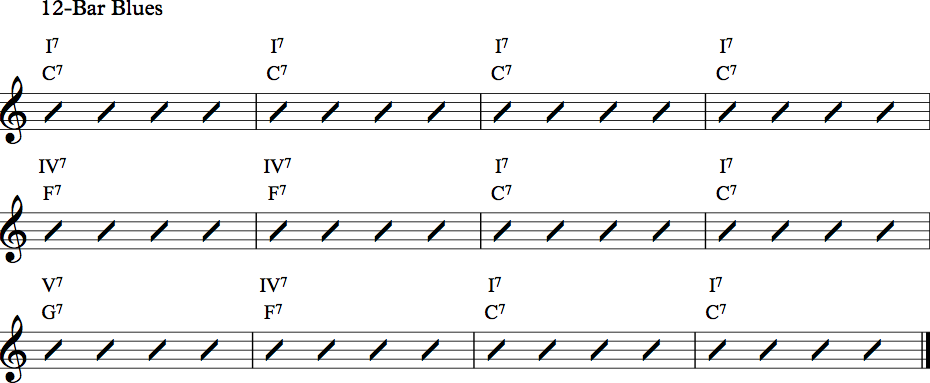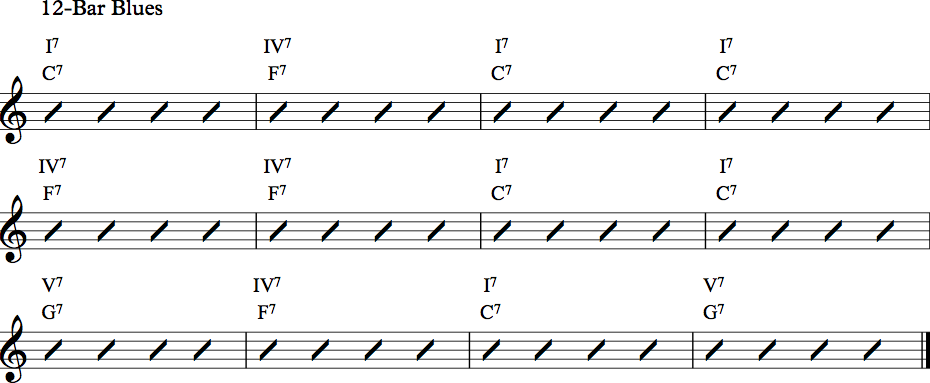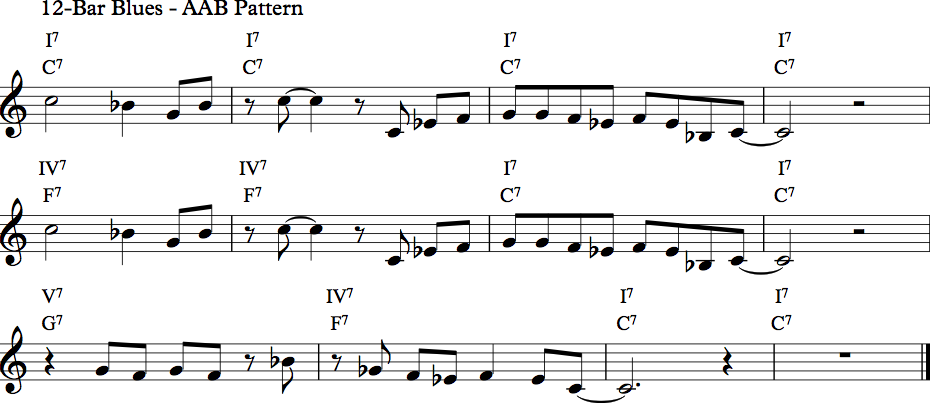
From Minor Pentatonic Scale to the Blues Scale
This culminating lesson will build on Using The Minor Pentatonic Scale and Exploring Form Using Minor and Major Pentatonic Scales lessons , and will enable students to gain an awareness of the relationship between the minor pentatonic and the blues scale. In addition, students will be introduced to the harmonic structure of the standard blues progression. Students will begin by composing and playing simple melodies based on the blues scale, then move on to improvising over a 12-bar blues using different approaches.
Watch Prince Charles Alexander take on the role of the producer as Ghost Box Orchestra solidifies their song's form.
Outcomes:
- Students will demonstrate their understanding of the blues scale by composing a melody for several 12-bar blues compositions and playing their melodies over a standard 12-bar blues progression.
Materials and Resources:
- One or a mix of the following: notation paper, notation software, a DAW
- Preferred instrument
- Suggested listening:
- Bessie Smith – St. Louis Blues
- BB King – Everyday I Have the Blues
- Duke Ellington – C Jam Blues
- T-Bone Walker – Stormy Monday
- Eric Clapton – Before You Accuse Me
INSTRUCTIONAL ACTIVITY IDEAS
Exposition of Material
1. If needed, review material about the minor pentatonic scale and the ideas for writing melodies introduced in Using The Minor Pentatonic Scale and Exploring Form Using Minor and Major Pentatonic Scales.
Identifying Key Concepts and Terms
2. Introduce students to the blues scale. Compare the minor pentatonic scale and the blues scale.
As seen previously, the minor pentatonic scale has 5 notes:

The blues scale is similar to the minor pentatonic, but adds one additional note, the flatted 5th.

3. After exploring the above material, introduce students to the standard blues progression. Below are two variations using the I, IV, and V chords:
Version 1:

Version 2:

4. The blues is usually in strophic form, with the same 12 bars repeating. Have students listen to and analyze several blues songs, either using songs of the teacher’s choosing or songs from the PULSE Song Library. In addition, some suggested listening is listed in the Materials and Resources section above. If appropriate, students can also suggest songs for analysis.
Activity/Assessment
5. Discuss the goals for the composition project:
a. The main goal of this composition project is to compose melodies that can be played over a standard blues progression.
b. Within the repeating “A” section of the strophic form, there is often another pattern. You’ll notice that often the 12 bars of the blues are divided into an AAB pattern, with the 12 bars being divided into three 4–bar phrases. The first two phrases have the same melody, and the third phrase has a different melody. The following example illustrates an AAB pattern:

c. Alone, in pairs, or small groups, students will compose several 4-bar melodic patterns based on the blues scale. Many approaches to melody writing were presented in previous lessons. If needed, review those concepts now.
d. Once the students have composed their blues melodies, they will begin to develop their 12-bar blues compositions using an AAB pattern. Students will create several versions, combining different melodic patterns for each version.
e. When students have completed their 12-bar blues compositions, they will practice and perform their melodies for the class. In addition, students will use their melodies to do echo and call and response activities in small or large groups.
Download the "From Minor Pentatonic Scale to the Blues Scale" complete lesson.


